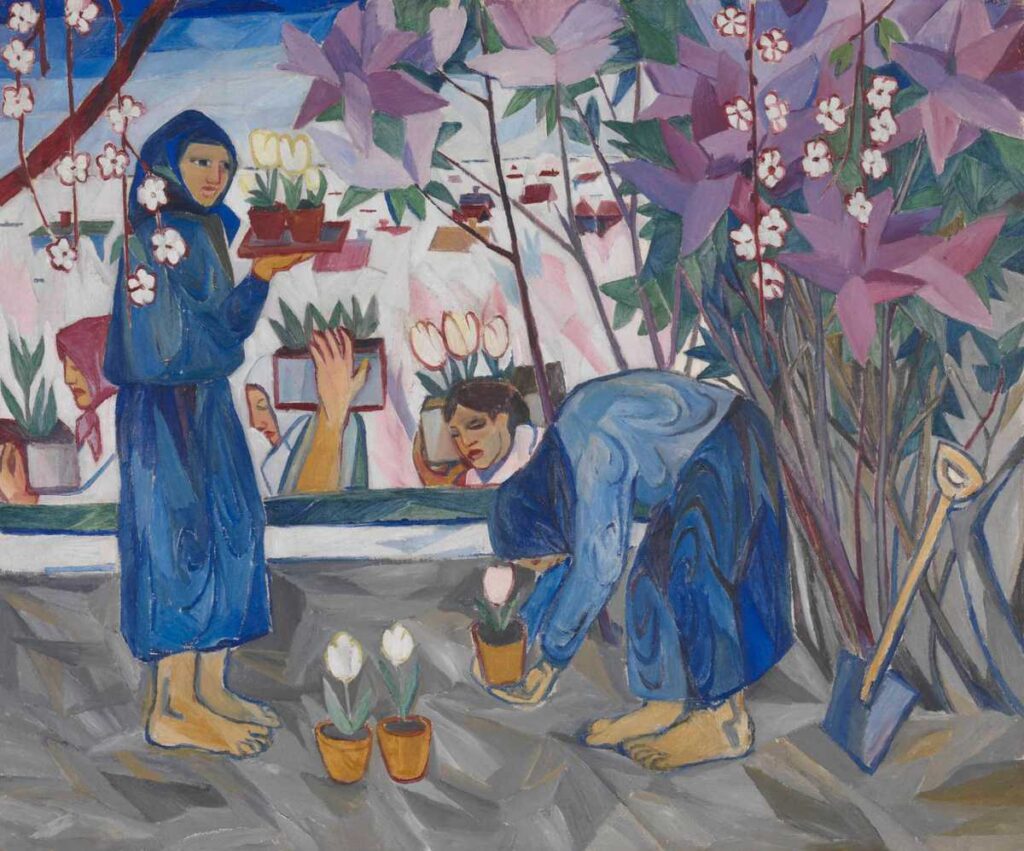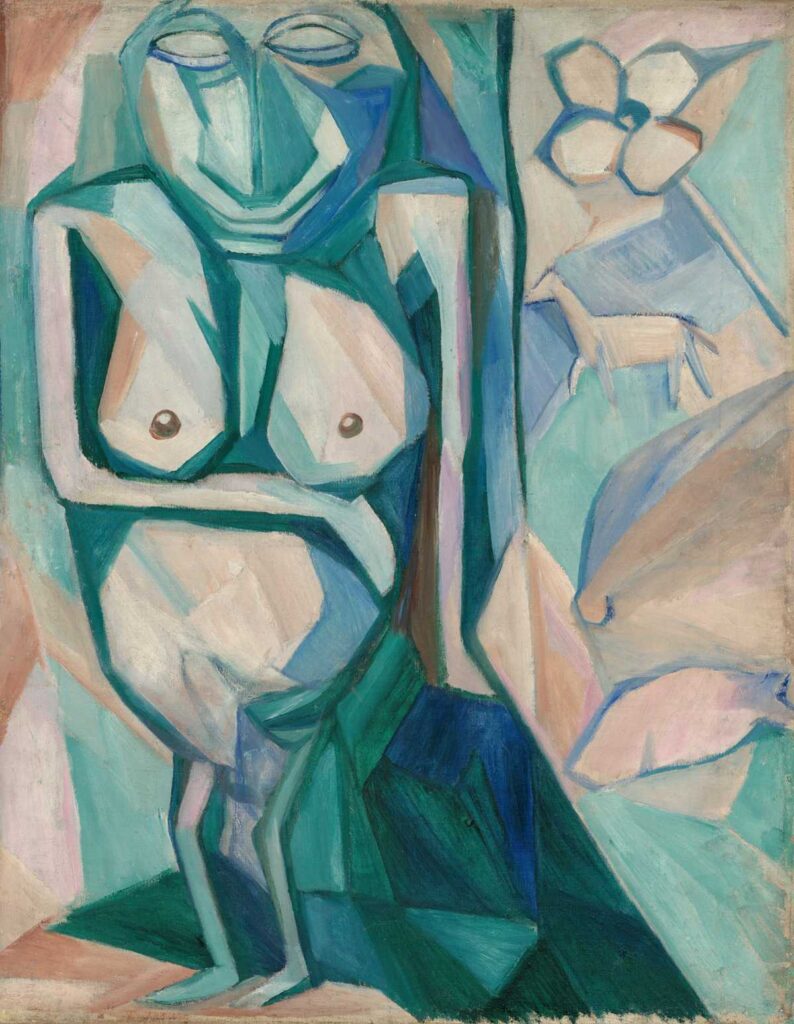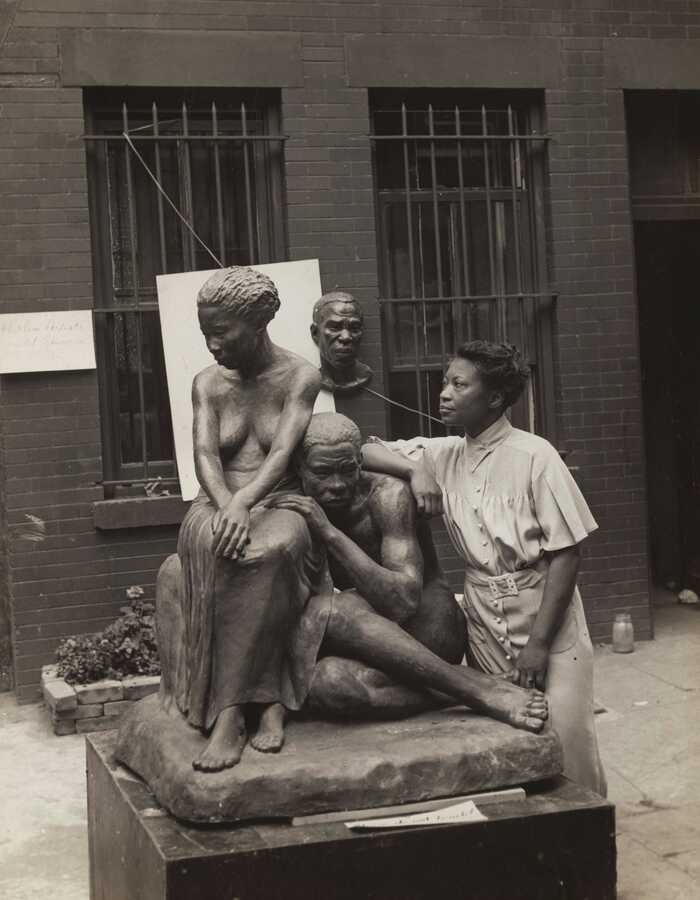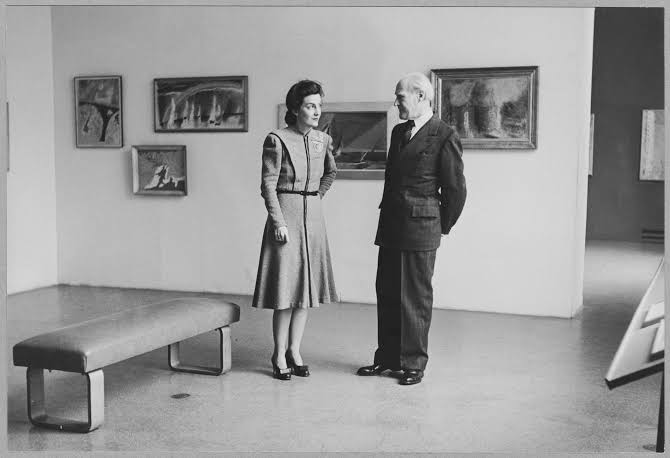
Natalia Goncharova- An artist who challenged the limits of social and gender expectations.


In a world where women often had a hard time dealing with societal rules, there were bold individuals who broke the norms and made a lasting impact on history. One of these trailblazers was Natalia Goncharova, a Russian artist who bravely pushed the boundaries of art, social norms, and gender expectations.
In a time when it was tough for women to stand out against men, Natalia Goncharova confidently used her talents to rebel. Her journey went beyond limits, trying out different styles like Cubo-Futurism and Rayonism. With her colorful paintings and innovative designs, Goncharova not only broke the art rules but also opened doors for upcoming female artists.
In the early 1910s, Natalia Goncharova transcended labels and expectations. Her artistic quest went beyond mere style or individuality, reaching across geography and history. She wasn’t confined by the distinctions between the artistic and the decorative. Instead, she became a traveler through space and time, seeking the ultimate art form that defied categorization.
Natalia Goncharova’s legacy is that of a visionary who left a lasting mark on Russian art, blending innovation with a profound appreciation for the cultural roots that shaped her extraordinary body of work. Read on to know more about her
Early years and the beginning of her art career
Natalia Goncharova was born in Nagaevo, Russia, in 1881. She grew up in a place with lots of different cultures and traditions. Natalia loved art from a young age and went to the Moscow Institute of Painting, Sculpture, and Architecture when she was 18.
In Moscow, where there was a lot happening in the art world, she fit right in. Natalia started making art that mixed her country upbringing with the busy city life. When she teamed up with another artist, Mikhail Larionov, they began to explore new ways of making art together.

Natalia’s early years were all about trying new and different things, showing she was unafraid to break the usual rules. These early experiences set the stage for her later career, where she would go on to challenge expectations and become a famous artist.
As Natalia Goncharova ventured further into her journey, her career started to blossom. In the early 1900s, she and Larionov co-founded a movement called Rayonism, which focused on capturing the energy of light and movement in paintings. This groundbreaking approach marked a significant step in her career.
The objects that we see in life play no role here, but that which is the essence of painting itself can be shown here best of all – the combination of colour, its saturation, the relation of coloured masses, depth, texture; anyone who is interested in painting can give his full attention to all these things.
Natalia Goncharova gained recognition not only for her innovative techniques but also for her diverse range of works. From paintings to book illustrations and even designing costumes for theater productions, she showed her skills in various forms. Her creations drew attention not only in Russia but also internationally.
In the midst of World War I and the Russian Revolution, Goncharova continued to evolve. She explored different styles, embracing Cubism and Futurism, leaving an indelible mark on the avant-garde movement. As her career soared, Natalia Goncharova solidified her position as a leading figure in the ever-changing landscape of modern art.
Goncharova’s debut: Moscow’s young art sensation


In 1913, Natalia Goncharova made a spectacular entrance onto Moscow’s art scene with her first major solo exhibition. Hosted at the Art Salon on Bolshaya Dmitrovka Street, the showcase featured an impressive collection of over 800 works, marking the first time a Russian avant-garde artist had a solo exhibition.
This groundbreaking event not only stunned the city but solidified Goncharova’s status as one of Russia’s most successful and daring artists. In a brilliant publicity move, she and fellow artists paraded through Moscow’s streets adorned with hieroglyphic patterns on their faces, capturing the attention of curious crowds and photographers.
The clever stunt paid off, drawing over 12,000 visitors to the exhibition and resulting in the sale of 31 works. All this success unfolded just weeks before Goncharova turned thirty, showcasing her remarkable impact on the art world at a relatively young age.
A confronting controversy in Natalia Goncharova’s art career
In 1910, Natalia Goncharova stirred a storm of criticism with her exhibition, leaving art critics outraged. The focal point of their discontent was her unconventional representation of female nudes and their prominent role in paintings depicting pagan mythology.

The controversy reached its peak when the police confiscated one of her works, “The Deity of Fertility,” leading to charges for violating laws against displaying what authorities deemed ‘corrupting’ images.
A few years later, Goncharova faced another clash with censors. Her painting “The Evangelists” was removed from an exhibition in St Petersburg, deemed blasphemous by the authorities. These incidents underscored Goncharova’s bold and provocative approach, challenging societal norms and sparking debates about the boundaries of artistic expression in the early 20th century.
Undeterred by the controversies surrounding her work, Natalia Goncharova displayed remarkable resilience. Rather than conforming to societal expectations, she continued to push boundaries, undaunted by the outrage sparked by her depictions of female nudes and explorations of pagan mythology.
Despite legal challenges and censorship, Goncharova’s commitment to her vision remained steadfast. Her ability to weather such storms and persist in her creative pursuits showcased a resilience that defined her career. In the face of criticism and opposition, she stood firm, leaving an enduring legacy as a pioneering artist who fearlessly navigated the tumultuous landscape of early 20th-century Russian art.
A flourishing legacy: Goncharova’s last years
As Natalia Goncharova moved into the later years of her career, she continued to evolve as an artist. Embracing a diverse range of styles, she delved into Cubism and Futurism, leaving an indelible mark on the dynamic landscape of the Russian avant-garde.
Despite the challenges and controversies, Goncharova’s reputation as a trailblazer only grew. She collaborated with the Ballets Russes, contributing groundbreaking costume designs that added a new dimension to her artistic repertoire. This collaboration exemplified her ability to seamlessly blend the traditional and the avant-garde.
Natalia Goncharova’s later years were marked by recognition and international acclaim. Her legacy extends beyond the canvas, influencing subsequent generations of artists. Her fearless exploration of artistic possibilities and unwavering dedication to her craft solidify her as a pioneering force in the 20th-century art.

Goncharova’s lasting impact on the artists and art world
Natalia Goncharova is like a shining star in the story of art, someone who bravely went against the usual way of doing things. From the troubles she faced early on to the victories in her later years, Goncharova’s life shows us what it means to keep going no matter what.
Looking back at what she did, Natalia Goncharova wasn’t just an artist; she was like a rebel challenging the rules of her time. Her influence can be seen in the art world’s ongoing experiments and in how she inspires others to be creative.
When we remember Natalia Goncharova, we’re not just thinking about a woman who didn’t follow the usual rules. We’re remembering an artistic powerhouse that keeps on inspiring people to think outside the box, proving that real creativity has no limits.
Want to know more about amazing women artists from the past
If you enjoy learning about awesome women like Natalia Goncharova and want to know more about the history of art, we’ve got something special for you. Take a closer look at the stories of other amazing women who, just like Goncharova, did things in their own unique way and made a lasting impact on the world of art.
Getting to know these incredible women not only gives you a better picture of art history but also reveals stories of determination, creativity, and strong love for what they do.
We recommend..
An Art Historian
A feminist artist
A close-up painter
















Comments 16